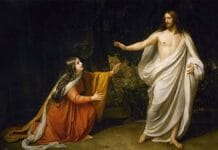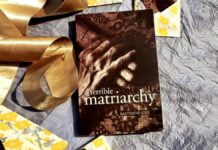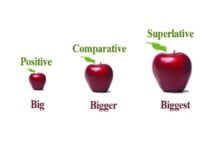Like any art form, poetry combines creativity and technique to produce realised concepts within a particular medium. One technique used to achieve a poet’s ideas is the use of stanzas. Stanzas are both functional and creative tools that influence a poem and how it is read.
Stanza forms are the building blocks of poetry, each with distinct structures and characteristics. It is a series of lines arranged together by their repeating meter or rhyme. Stanzas are separated to divide and organise a poem. In poetry, they function similarly to how paragraphs function in prose. The number of lines typically defines various types of stanzas. Poets use stanzas to influence a poem’s structure, rhythm, shape, and organisation.
- Stanzas separate prose from poetry. A poem is often recognised at a glance because of the stanzas.
- Stanzas simplify the process of memorising poems.
- Stanzas group-specific lines with the same idea to ease the reader’s understanding.
- Stanzas help to define formal types of poems.
Couplet
A couplet is a two-line stanza, usually with the same meter and often rhyming. It’s one of the simplest stanza forms.
- Often used to make a concise and impactful statement.
- Common in many poetic forms, including sonnets and epigrams.
Example rhyme scheme: AA
Shakespeare’s sonnets often end with a rhyming couplet.
So long as men can breathe or eyes can see,
So long lives this and this gives life to thee. (AA)
–Sonnet 18 by William Shakespeare
Tercet
A tercet consists of three lines of verse, which may or may not rhyme.
- When tercets rhyme, they often follow an AAA or ABA pattern.
- Frequently used in combination to form larger structures, such as the terza rima.
Example rhyme schemes: ABA, AAA, or unrhymed
Haiku is a form of Japanese poetry that uses three unrhymed lines.
He clasps the crag with crooked hands;
Close to the sun in lonely lands,
Ring’d with the azure world, he stands. (AAA)
–The Eagle by Alfred Lord Tennyson
Quatrain
A quatrain is a four-line stanza, one of the most common in English poetry. It can have various rhyme schemes.
- The most common stanza form in English poetry.
- Various rhyme schemes are possible.
Example rhyme schemes: ABAB, ABBA, AABB, ABCB
Many ballads and hymns use quatrains.
Tyger Tyger, burning bright,
In the forests of the night;
What immortal hand or eye,
Could frame thy fearful symmetry? (AABB)
–The Tyger by William Blake
Terza Rima
Terza rima is a three-line stanza using chain rhyme. The second line of each stanza rhymes with the first and third lines of the next stanza.
- Creates a sense of continuity and flow.
- Famously used by Dante Alighieri in The Divine Comedy.
Rhyme scheme: ABA BCB CDC, etc.
O wild West Wind, thou breath of Autumn’s being,
Thou, from whose unseen presence the leaves dead
Are driven, like ghosts from an enchanter fleeing, (ABA)
Yellow, and black, and pale, and hectic red,
Pestilence-stricken multitudes: O thou,
Who chariotest to their dark wintry bed (BCB)
–Ode to the West Wind by Percy Bysshe Shelley
Ottava Rima
Ottava rima is an eight-line stanza with a specific rhyme scheme.
- Often used for long narrative poems.
- Provides a balance between narrative flow and lyrical beauty.
Rhyme scheme: ABABABCC
Lord Byron’s Don Juan is written in ottava rima.
Tis known, at least it should be, that throughout
All countries of the Catholic persuasion,
Some weeks before Shrove Tuesday comes about,
The People take their fill of recreation,
And buy repentance, ere they grow devout,
However high their rank, or low their station,
With fiddling, feasting, dancing, drinking, masquing,
And other things which may be had for asking. (ABABABCC)
–Beppo by Lord Byron
Spenserian Stanza
The Spenserian stanza, created by Edmund Spenser, consists of nine lines. The first eight lines are in iambic pentameter, and the last is in iambic hexameter (also called an Alexandrine).
- Developed by Edmund Spenser for The Faerie Queene.
- Combines the narrative pace of the eight lines with a contemplative or summarising effect in the final Alexandrine.
Rhyme scheme: ABABBCBCC
A gentle knight was pricking on the plaine,
Ycladd in mightie armes and silver shielde,
Wherein old dints of deepe woundes did remaine,
The cruell markes of many a bloody fielde;
Yet armes till that time did he never wield:
His angry steede did chide his foaming bitt,
As much disdayning to the curbe to yield:
Full jolly knight he seemed, and faire did sitt,
As one for knightly jousts and fierce encounters fitt. (ABABBCBCC)
–The Faerie Queene by Edmund Spenser
Rime Royal
Rime royal, also known as Chaucerian stanza is a seven-line stanza in iambic pentameter.
- Often used for narrative and reflective poetry.
- Provides a formal, stately feel.
Rhyme scheme: ABABBCC
Chaucer used this form in Troilus and Criseyde and The Canterbury Tales.
The double sorwe of Troilus to tellen,
That was the king Priamus sone of Troye,
In lovinge, how his aventures fellen
Fro wo to wele, and after out of Ioye,
My purpos is, er that I parte fro ye.
Thesiphone, thou help me for tendyte
Thise woful vers, that wepen as I wryte! (ABABBCC)
–Troilus and Criseyde by Geoffrey Chaucer
Characteristics and Effects
- Couplets can create a sense of completion or emphasis.
- Tercets can provide a rhythmic flow and are often used in narrative poetry.
- Quatrains are versatile and can be used for various poetic effects.
- Terza rima creates a flowing, interlocking rhythm that can propel a narrative forward.
- Ottava rima allows for an extended narrative with a solid rhythmic structure.
- The Spenserian stanza provides room for complex ideas and descriptions, with the final Alexandrine often providing a climactic or summary effect.
- Rime royal balances the brevity of shorter forms and the expansiveness of longer ones, allowing for both narrative and lyrical expression.
Understanding these stanza forms is essential for appreciating the structure and artistry of poetry. Each form brings rhythm, rhyme, and thematic possibilities, enriching the poetic experience. Poets often choose a particular stanza form based on the subject matter, tone, and effect they wish to achieve in their work. The structure of the stanza can contribute significantly to the overall impact and meaning of the poem.





























